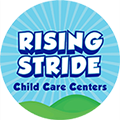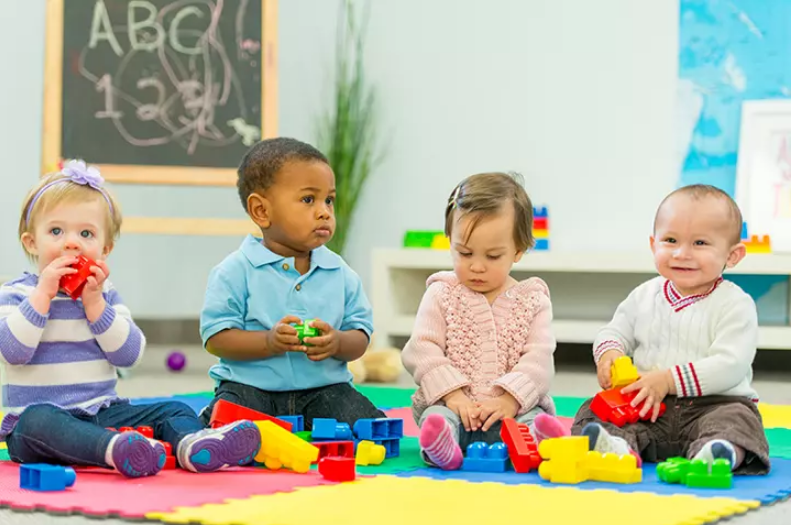Children and play go hand in hand. But did you know that there’s one type of play that offers a wealth of benefits for children’s learning and development? Here you’ll learn about open-ended play.
Open-ended play is an unstructured, imaginative form of play that allows children to independently explore the world around them. Engaging in this type of play encourages creativity, problem-solving, language development, and social-emotional intelligence.
Creating these experiences can be as simple as providing children with open-ended materials while playing. Materials can include blocks of different sizes, baskets, boxes, balls, chalk, paper, playdough, textured fabrics, and even outdoor natural materials.
In this blog, we’ll share more about open-ended play, its benefits for a child’s growing mind, and the different types of activities and materials you can provide to help foster this type of play in children.
What is open-ended play?
Open-ended play occurs when kids play independently by examining and manipulating materials without a specific goal, set of instructions, or adult direction.
Unlike structured play, which typically involves an adult establishing predetermined rules and objectives, open-ended play has no clear endpoint or predetermined outcomes. There are no right or wrong answers, set rules, or specific courses of action.
Instead, children are given the space and time to follow their interests and ideas, investigate their environment freely, and experiment with different materials and experiences. Through open-ended play, children learn to be independent, creative, and curious.
Let Their Creativity Flow
Open-ended materials are those that don’t come with instructions, meaning there is no right or wrong way to use them. This allows children to use them in endless, creative ways using their imagination as a guide. For example, a block can be used to build a house one day and become a microphone to sing a favorite song the next.
When introducing open-ended materials, creating and playing alongside your child can spark ideas of how to use them. Leaves and sticks found during a family walk might be used as paintbrushes to create a masterpiece when a child arrives back home. You can model a way to use these materials by dipping a stick in paint and dabbing it on a piece of paper to create one or two dots. Allow them to continue creating on their own by making additional marks. Extra inspiration can be given through books and photos to guide their ideas and spark their wonder and curiosity.
By letting children use materials freely based on their own creative thoughts and ideas, we are empowering them to be creative while promoting critical thinking skills.
Engage in Conversation
As children engage in open-ended experiences, join them! This is a great opportunity to get down on their level and have fun while asking questions and talking to them about what is happening. This also shows children how they can engage in meaningful conversations with others.
We can take these interactions a step further by asking open-ended questions, which allow children to use a wide range of vocabulary instead of a simple “yes” or “no.” Some questions we can ask to guide their thoughts are:
- “I wonder what would happen if …”
- “What do you notice about …”
- “How might you do it differently?”
- “What do you think will happen next?”
- “What makes you happy?”
- “Tell me about it”
Listen with Patience
At first, children might not answer these questions right away. Letting them take their time to think and answer shows that you are genuinely interested in what they have to say and that their voice matters. To extend their learning, repeating what they are saying and adding extra information and new words can keep a child thinking! This continues building a rich vocabulary and makes them feel confident when expressing themselves.
Open-ended experiences instill confidence in children as they experiment with different ways to use materials or complete a task. While trying something new, a child can problem-solve and try out a new idea without the pressure of being right or wrong. This supports a positive attitude toward lifelong learning!
What are the benefits of open-ended play?
Young children gain numerous social-emotional benefits and strengthen essential skills that improve academic performance when they engage in open-ended play. This form of play is a valuable tool in early childhood development to prepare them for future learning and success.
Encourages Creativity and Imagination
Open-ended play motivates children to use their imagination to create and explore ideas. This type of play requires children to think outside the box (or with an actual box, as in the example above), which challenges their creativity and sparks their imagination.
Supports Language Development
Open-ended play provides children with opportunities for language development by immersing them in imaginative and creative scenarios that allow them to practice and enhance their communication abilities. Children expand their vocabulary, acquire new language concepts, develop storytelling abilities, and gain confidence in expressing themselves.
Strengthens Problem-Solving Skills
During open-ended play, children have the freedom to experiment, make mistakes, and find solutions to problems. Without predetermined rules or outcomes, children must put their problem-solving abilities to work and learn to adjust quickly when faced with new situations.
Develops Fine Motor Skills
Open-ended play involves hands-on exploration and precisely manipulating objects. For example, building with blocks or painting helps develop hand-eye coordination, fine motor skills, and spatial awareness.
Promotes Physical Development of Gross Motor Skills
It also engages children in various physical activities like jumping, climbing, and running which contributes to gross motor skill acquisition. During this type of play, children use large muscle groups and practice body control for improved coordination and balance.
Enhances Social Skills
Open-ended play often involves collaborating and communicating with peers, which practices social, leadership, and decision-making skills. Children learn to share, take turns, negotiate, and work together to achieve a common goal.
Helps Build Confidence
Open-ended play allows children to take risks, make decisions, and feel accomplished when they successfully create or solve a problem. This type of play helps build children’s confidence and self-esteem.
A Lifetime of Learning Starts in Pre-K
At Rising Stride, we understand the importance of nurturing all aspects of a child’s growth, including language development. Our curriculum is designed to provide children with rich and engaging experiences to help them reach their full potential. Contact us today to find out about or Free Trial Day!

